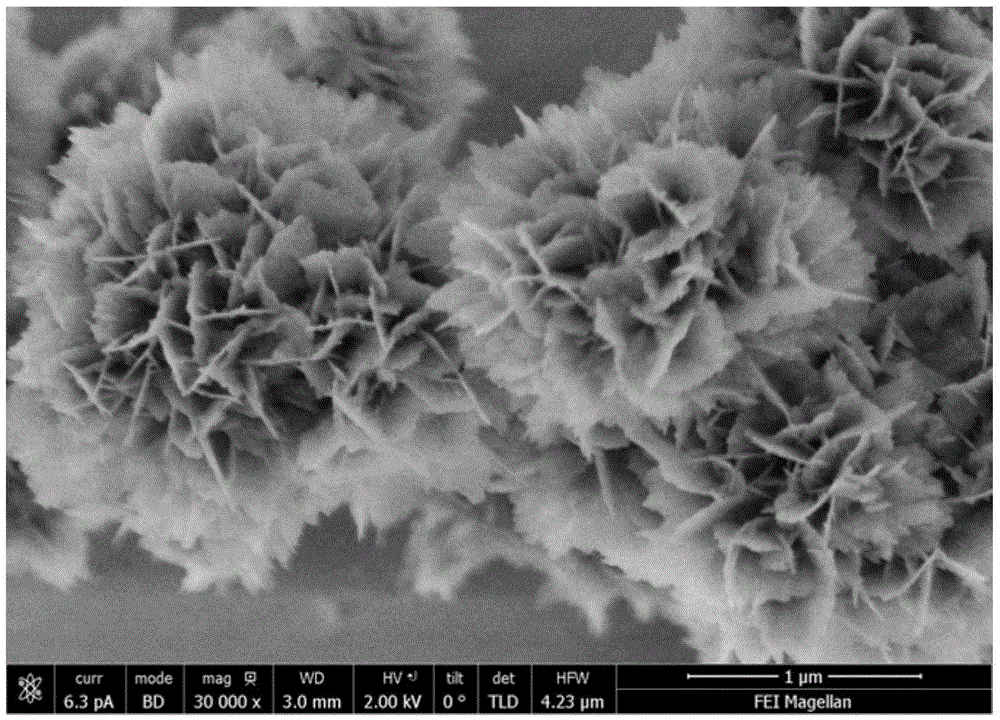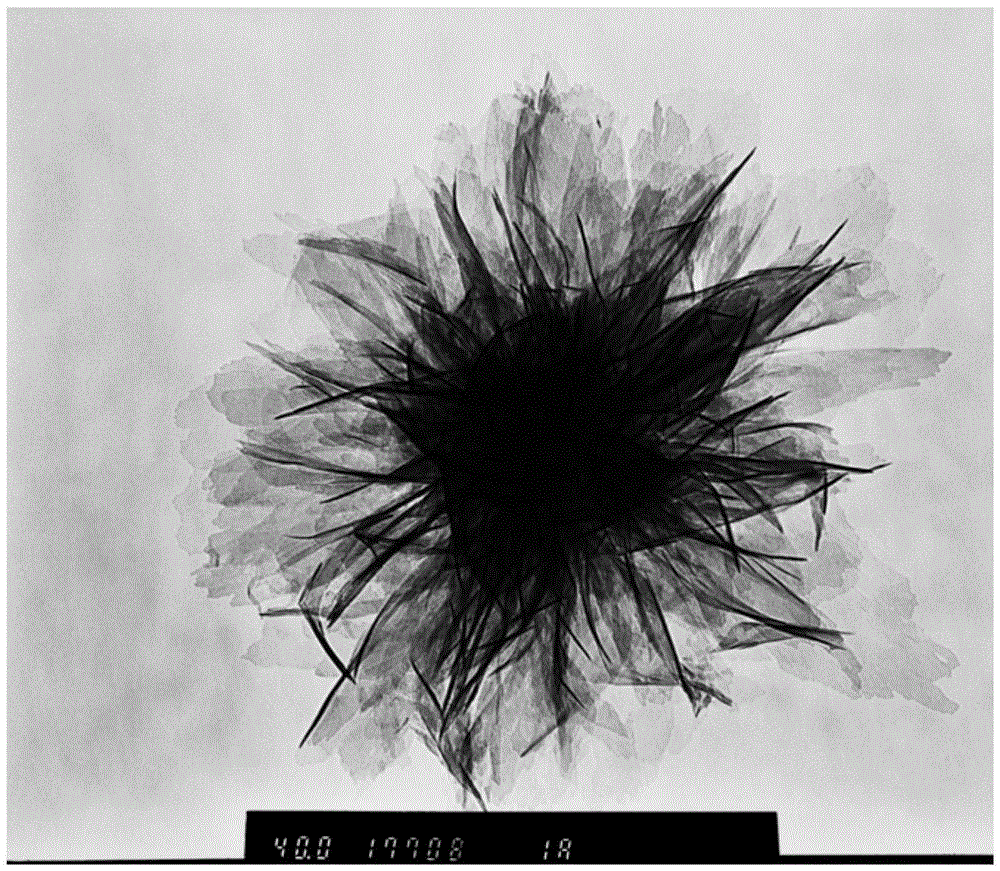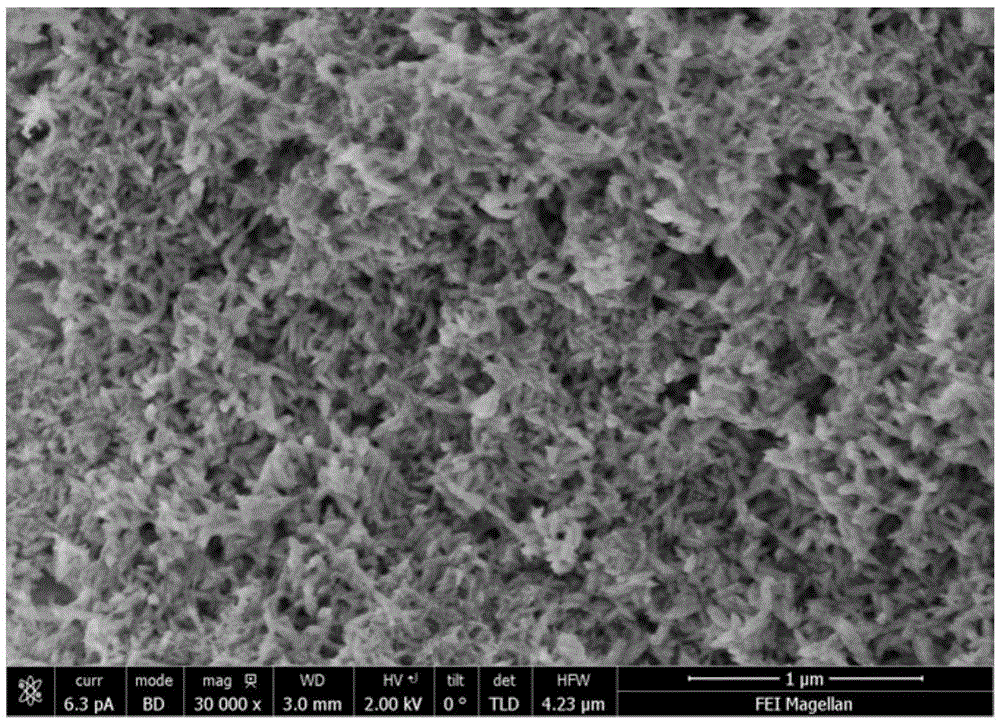Antibacterial material and preparation and application thereof
A technology of antibacterial materials and antibody molecules, applied in the field of preparation of antibacterial materials, to achieve the effect of simple preparation method, low price and superior biocompatibility
- Summary
- Abstract
- Description
- Claims
- Application Information
AI Technical Summary
Problems solved by technology
Method used
Image
Examples
Embodiment 1
[0047] 1. Preparation of hydroxyapatite:
[0048] At room temperature, 1.791 g of Na 2 HPO 4 ·12H 2 O was dissolved in 250 ml of deionized water to form solution A, and 1.762 g of Ca(CH 3 COO) 2 ·H 2 O was dissolved in 100 mL of deionized water to form solution B. Add 0.030 g of protidine DNA to 30 ml of solution A, stir at room temperature to dissolve it completely, adjust the pH to 5 with 1 mol / L of hydrochloric acid, then add 10 ml of solution B dropwise, and use 1 mol / L of liters of hydrochloric acid to adjust the pH and keep it at around pH 5. After the dropwise addition was complete, the mixed clear liquid was transferred into a Teflon liner (liner capacity 100 ml) and sealed. Put the lining into the hydrothermal reaction jacket and put the jacket together with the microwave reaction oven to react at 120° C. for 10 minutes. After the reaction system was naturally cooled to room temperature, the product was taken out, and the product was separated by centrifugatio...
Embodiment 2
[0056] 1. Preparation of hydroxyapatite:
[0057] At room temperature, 1.791 g of Na 2 HPO 4 ·12H 2 O was dissolved in 250 ml of deionized water to form solution A, and 1.762 g of Ca(CH 3 COO) 2 ·H 2 O was dissolved in 100 mL of deionized water to form solution B. Add 0.030 g of protidine DNA to 30 ml of solution A, stir at room temperature to dissolve it completely, add 10 ml of solution B, and adjust the pH to 10 with 1 mol / L of sodium hydroxide. Transfer the mixed clear liquid into a Teflon liner (liner capacity 100 ml) and seal. Put the lining into the hydrothermal reaction jacket and put the jacket together with the microwave reaction oven to react at 120° C. for 10 minutes. After the reaction system was naturally cooled to room temperature, the product was taken out, and the product was separated by centrifugation. The separated product was washed three times with deionized water, once with absolute ethanol, and dried in the air at 60°C to obtain the product shown...
Embodiment 3
[0066] Antibacterial effect experiment
[0067] 1. Experimental materials
[0068] Three common pathogenic bacteria in oral caries and periodontal disease: Streptococcus mutans (UA159), Lactobacillus acidophilus (L.acidophilus, ATCC4356) and Fusobacterium nucleatum (Fusobacterium nucleatum, ATCC25586) were selected as samples to inhibit bacteria Experimental strains.
[0069] 2. Experimental method
[0070] Streptococcus mutans and Fusobacterium nucleatum were resuscitated and cultured in bovine brain infusion (Brain Heart Infusion, BHI), and Lactobacillus acidophilus was cultured in MRS medium. After the bacteria were recovered, they were cultured in an anaerobic box on a solid medium for 48 hours, and independent colonies were picked and placed in a liquid medium, and cultured anaerobically for 24 hours. Take the bacterial suspension in the logarithmic growth phase of the third generation as the experimental bacterial liquid.
[0071] First select the ones prepared in Ex...
PUM
| Property | Measurement | Unit |
|---|---|---|
| particle diameter | aaaaa | aaaaa |
| particle diameter | aaaaa | aaaaa |
| particle diameter | aaaaa | aaaaa |
Abstract
Description
Claims
Application Information
 Login to View More
Login to View More - R&D
- Intellectual Property
- Life Sciences
- Materials
- Tech Scout
- Unparalleled Data Quality
- Higher Quality Content
- 60% Fewer Hallucinations
Browse by: Latest US Patents, China's latest patents, Technical Efficacy Thesaurus, Application Domain, Technology Topic, Popular Technical Reports.
© 2025 PatSnap. All rights reserved.Legal|Privacy policy|Modern Slavery Act Transparency Statement|Sitemap|About US| Contact US: help@patsnap.com



